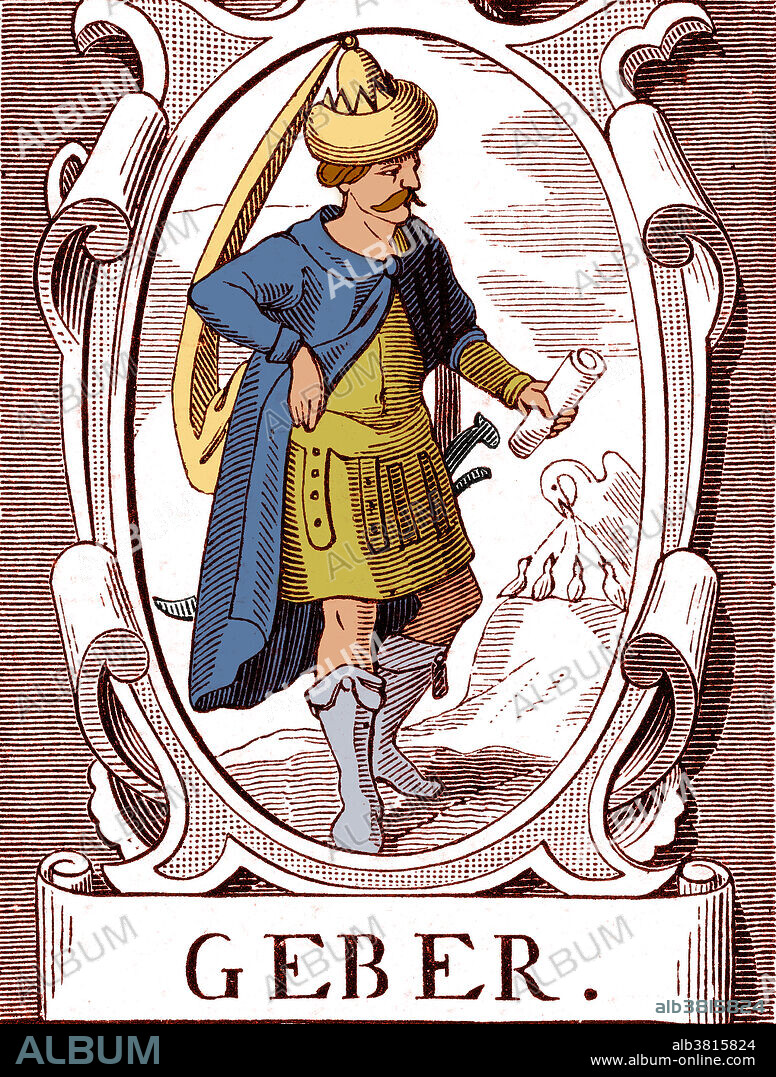alb3815824
Geber, Arab Polymath

|
Añadir a otro lightbox |
|
Añadir a otro lightbox |



¿Ya tienes cuenta? Iniciar sesión
¿No tienes cuenta? Regístrate
Compra esta imagen

Título:
Geber, Arab Polymath
Descripción:
Ver traducción automática
Abu Musa Jabir ibn Hayyan also known as Geber (721-815) was a prominent polymath: a chemist and alchemist, astronomer and astrologer, engineer, geologist, philosopher, physicist, and pharmacist and physician. Born and educated in Tus, located in Iran's Persian heartland of Khorasan, he later travelled to Kufa. Jabir is held to be the first practical alchemist. Jabir is mostly known for his contributions to chemistry. He emphasized systematic experimentation, and did much to free alchemy from superstition and turn it into a science. He is credited with the invention of many types of now-basic chemical laboratory equipment, and with the discovery and description of many now commonplace chemical substances and processes such as the hydrochloric and nitric acids, distillation, and crystallization that have become the foundation of today's chemistry and chemical engineering. His books strongly influenced the medieval European alchemists and justified
Crédito:
Album / NYPL/Science Source
Autorizaciones:
Modelo: No - Propiedad: No
¿Preguntas relacionadas con los derechos?
¿Preguntas relacionadas con los derechos?
Tamaño imagen:
2861 x 3774 px | 30.9 MB
Tamaño impresión:
24.2 x 32.0 cm | 9.5 x 12.6 in (300 dpi)
Palabras clave:
ABU • ARTE • ASTROLOGO • ASTRONOMO • CIENCIA • COLOR • DESTILACION • DIBUJO • DOCTOR • EXPERIMENTACIÓN • FAMOSO • FIGURA • FILOSOFO • FÍSICO (CIENTIFICO) • GENTE • GRABADO • HISTORIA • HISTORICO • ILUSTRACION • IMPORTANTE • INGENIERO • INVENTOR • ISLÁMICO • MEDICO • MEJORA • MEJORAR • MUSA • MUSAS • OBRA DE ARTE • PERSA • PERSONA • PERSONALIDAD • PERSONALIDADES • PRIMERO • QUIMICA • QUIMICO • SIGLO IX • SIGLO VIII S. VIII OCHO 8 • SIGLO VIII • SIGLO
 Pinterest
Pinterest Twitter
Twitter Facebook
Facebook Copiar enlace
Copiar enlace Email
Email
